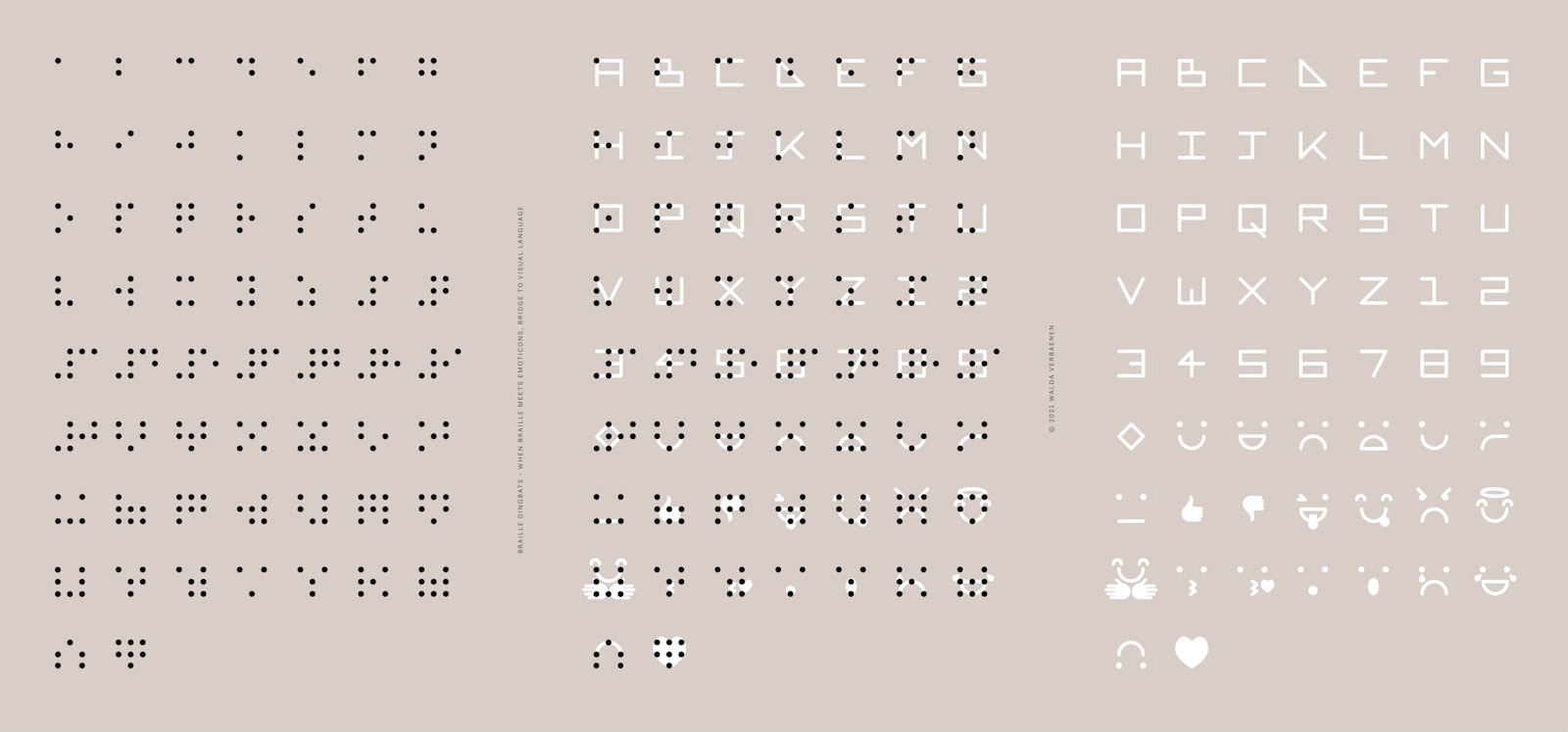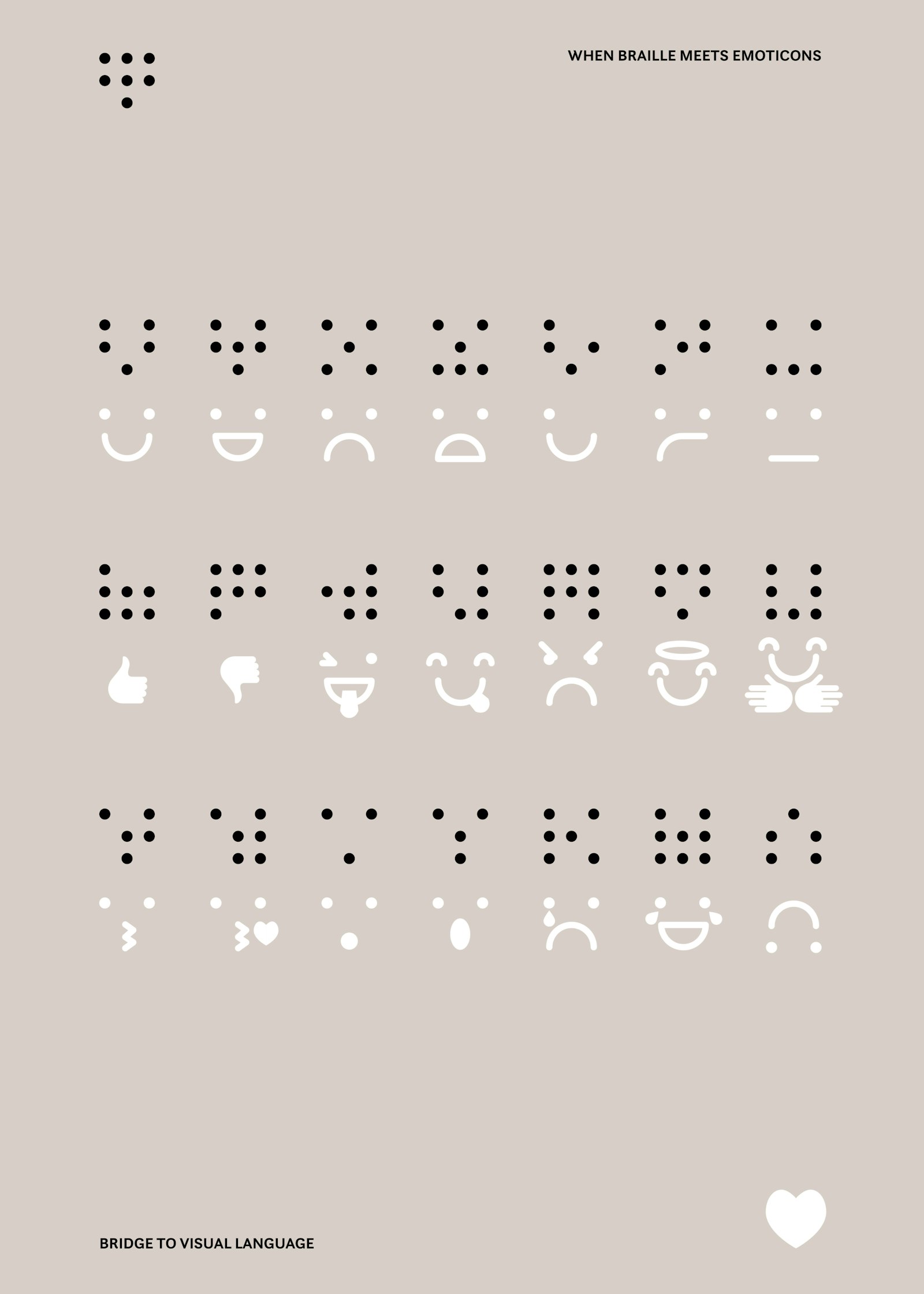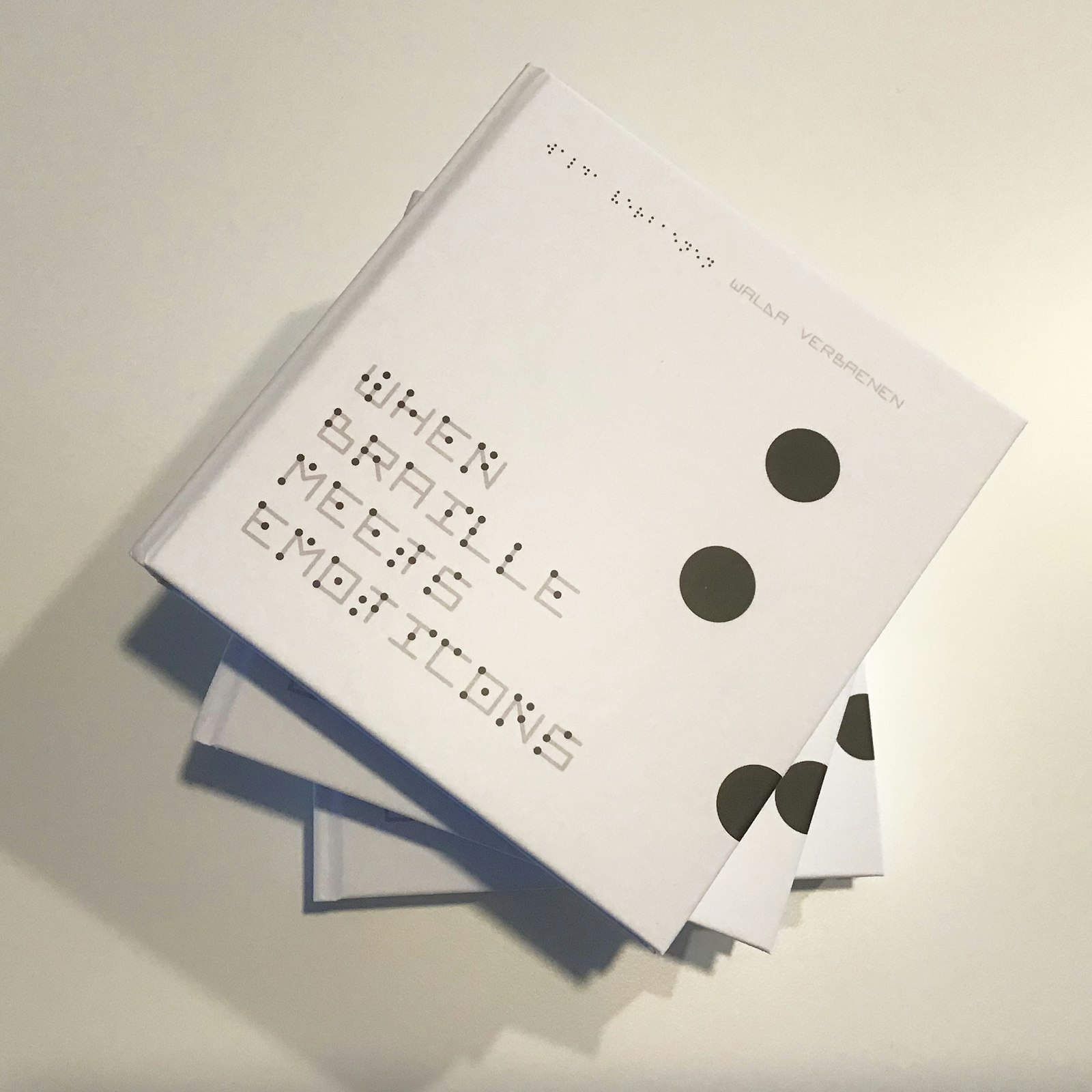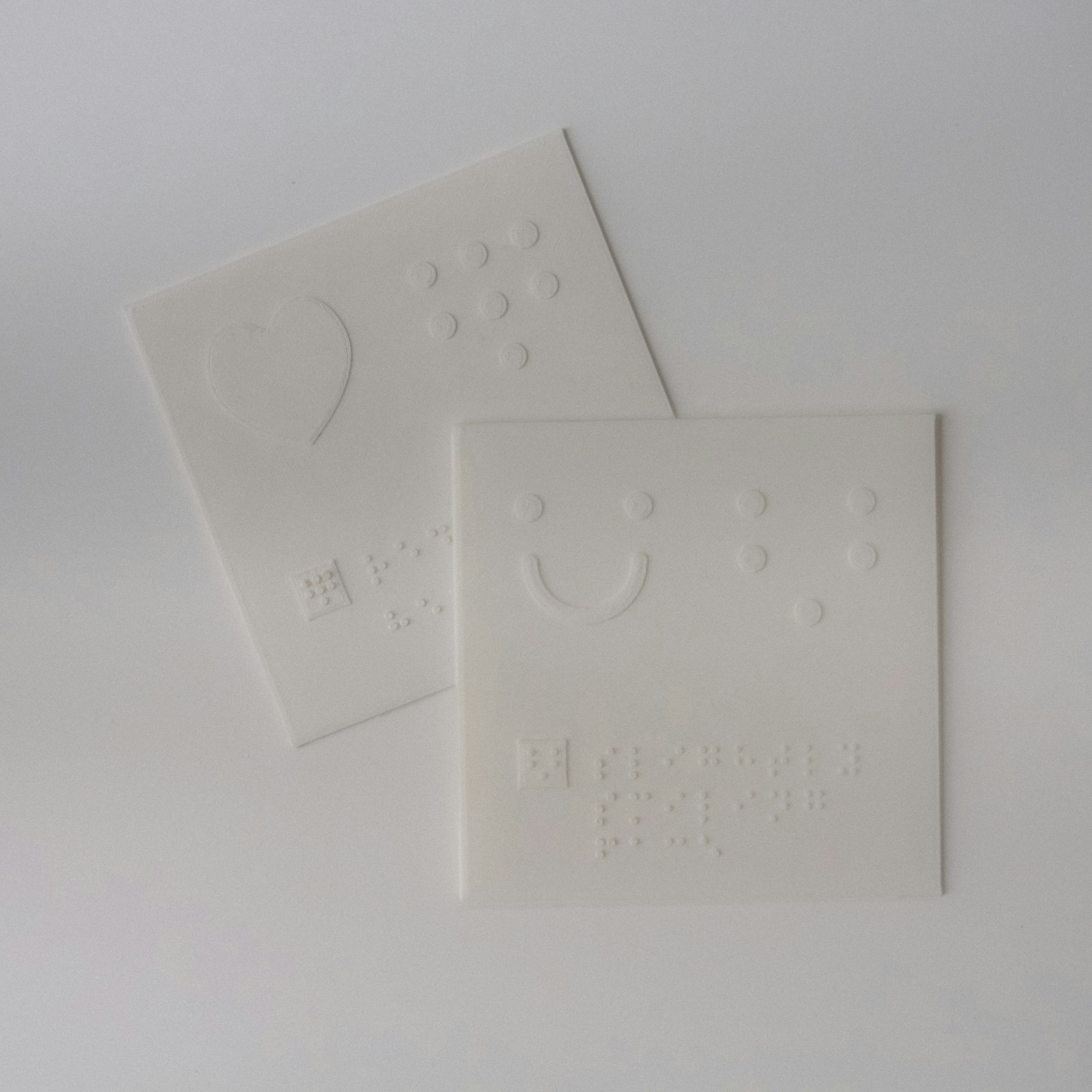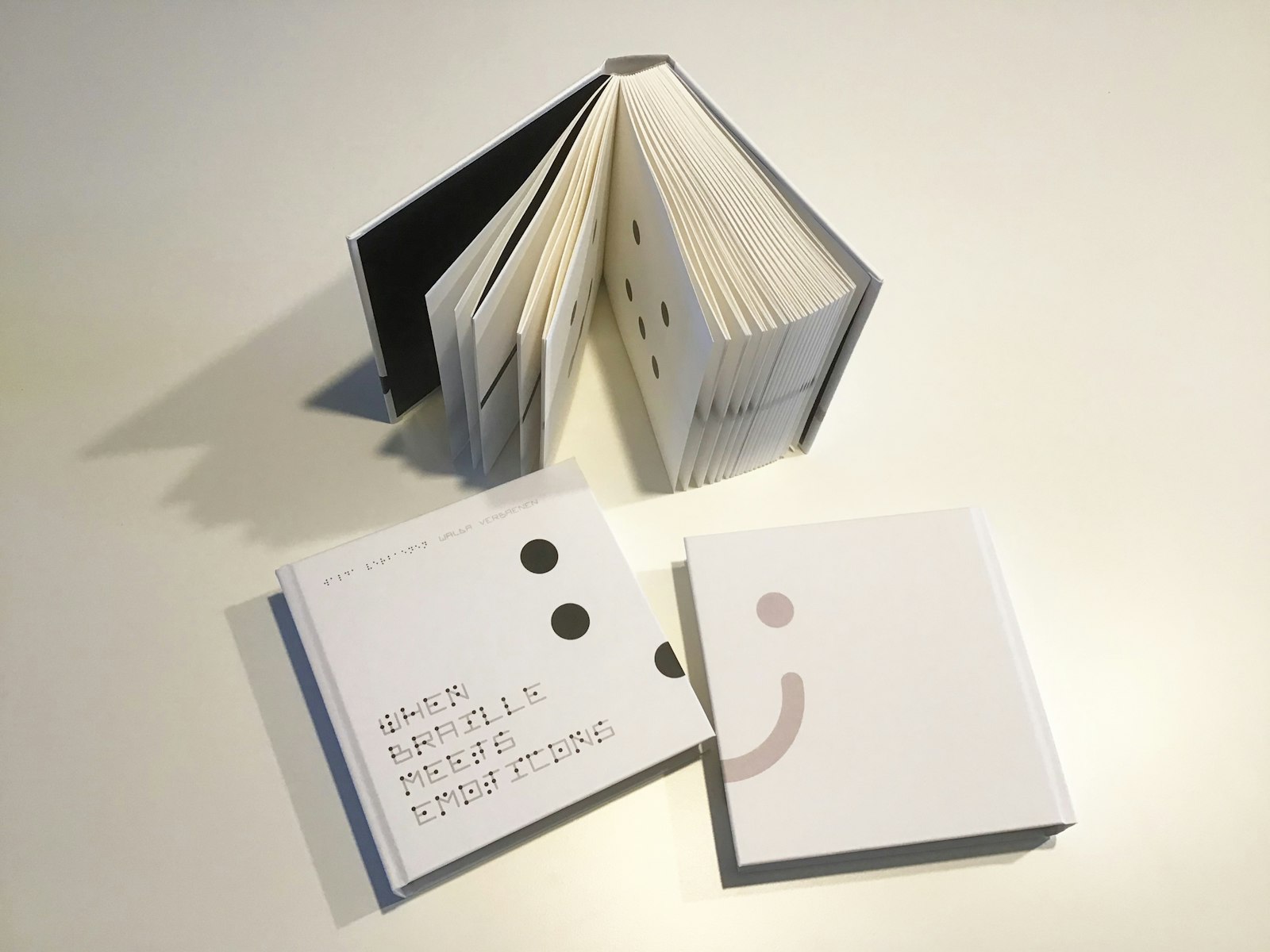de Velde
Braille Meets Emoticons
People who use the Braille language to read and write have no alternative to emoticons, which are language-independent universal symbols. In this typographic experiment Walda Verbaenen designed emoticons as an addition to the Braille alphabet.
Emoticons are universal images used to capture how someone is feeling in one image. People who use the Braille language to read and write have no alternative to these language-independent universal symbols, the widely used emoticons. This insight became the starting point of a typographic experiment in which Walda Verbaenen designed an addition to the Braille alphabet in the “point language” that is characteristic of Braille and in this way attempts to bridge the gap to a visual language for visually impaired people. For the study, she examined the 22 most commonly used emoticons. She noticed a logical build-up in the emoticons within a square grid, with eye and mouth placement playing an essential role. The letters of the famous Braille alphabet consist of six points, while the numbers are composed of a grid of 12 points. To avoid confusion when reading, the emoticons were developed within a new 9-point grid, which also fits well with the square structure in which the emoticon symbols are depicted. The Braille Dingbats alphabet has two versions. The extended version of Braille on the one hand - Braille Dingbats - visualising the 22 most commonly used emoticons for the visually impaired. On the other hand, Walda also designed a new alphabet of 26 letters and 10 digits that fit within the structure of the 9-point grid. In this way, the Braille symbol becomes visually related to a letter/number, making Braille also recognisable to those who can see. In support of the experiment, two posters, an animation, a book with the complete Braille Dingbats alphabet and a “feel” book with the 22 emoticons in relief were developed. These were produced in small test runs and are not yet on the market.
